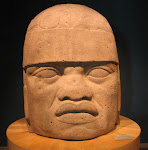Buba Drammeh is a talented batik artist from The Gambia. His batiks have been incorporated in the design for the CD "Mansalou", featuring the kora playing and singing of Jali Sherrifo Konteh.
Batik is a way of decorating cloth by covering part of it with a coat of wax and then dyeing the cloth. This process is usually repeated several times, using different dyes, until the final effect is achieved. The waxed area keeps its original colour and when the wax is removed the contrast between the dyed and undyed areas makes the pattern. During the dyeing the brittle nature of the dried wax will cause it to crack, allowing small quantities of dye to penetrate to the cloth. The resulting spider-web pattern adds an unplanned and interesting effect to any design and is a special characteristic of most batik work.
Buba normally buys his cloth, which is usually white or a very light colour, from the town of Serrakunda. He buys whatever amount of cloth he can afford, together with the dyes, salt, caustic soda and wax crayons.
Then he cuts the cloth according to the size of the pattern he has decided to draw. He spreads the cloth flat and draws straight onto the cloth (which is always 100% cotton) using a crayon which is not the same colour as the first dye. If the same colour were to be used the pattern would not been seen when it came out of the dye
He then melts the candle wax and uses a small stick with wire wrapped round it, called a tjanting, to dip in the wax. The wire will hold the wax and will permeate and seal the parts of the cloth it covers so that the dye cannot penetrate. He paints the melted wax onto the parts of the cloth he wants to remain white.
Next he prepares the dye-bath, mixing the salt and caustic soda with the dye powder, using gloves to protect his hands from the caustic soda. The soda and salt helps to fix the colour to the cloth. The first colour will be the lightest colour he wants to use. He then puts the material to dry but has to take care not to leave it in the hot sun for too long as it could melt the wax!
When the cloth is dry the wax is melted again and those areas that are to retain the colour just dyed are covered with wax, and the material is dipped into a dye of a colour darker in tone than the first. This process continues until the darkest shade (black) has been reached. There are usually five or six colours in the final batik, including the original white of the material and the final black. Since the colours are superimposed in the dyeing process, a particular colour-scale must be planned. For example, if the first colour was blue, then yellow could be used for the second dye and that would make green, or red to make brown.
Finally Buba buys firewood and builds a small fire to boil water, soap and salt together in a big container and the boiling water will take the wax out of the cloth. Then it is washed and ironed. The ironing will remove any final small particles of wax from the material. He has no electricity so the iron is a flat iron that holds heated charcoal in the top.
Buba syeas he gets the ideas for his designs from he said that he likes to promote the traditional African way of life. Things that his forefathers would also have done, such as hunting, fishing and pounding (rice and other grains), and also scenes of life in a compound or traditional musicians such as a kora , balafon or djembe player. He has also heard stories from his mother and grandmother, perhaps about an animal, and he will draw that, so, as he says, "Children can come and say, oh, look these animals are existing in The Gambia." He also gets ideas and colour schemes just by "looking at what is around me". This of course, includes the Baobab tree, which can live for hundreds of years, and is a very important tree in The Gambia. People depend on it for food and for cures and many believe it has magical properties.
Buba Drammeh was born at Nuimi Nemakunku village, in the Upper Nuimi district on North Bank. His father's name was Saikou Ba Drammeh, who was a hunter. He died very early but Buba has been told that he was a hunter of crocodiles and other creatures. His mother's name is Jankang Nass, now married again and living in Nuimi Lamin where Buba now lives with his wife, three children, adopted nephew, parents, sisters and other friends. There is a large and very productive vegetable garden which is run as a co-operative by all the hard-working women.
Fine dining whenever you want to eat out in Senegambia.
A unique Gambia restaurant for both Gambian and global cuisine.
Come and enjoy our restaurant in The Gambia!
Directions Bertil Harding Highway, next to Senegambia Craft Market
220 4464022
220 6664022

































.jpg)


















No comments:
Post a Comment